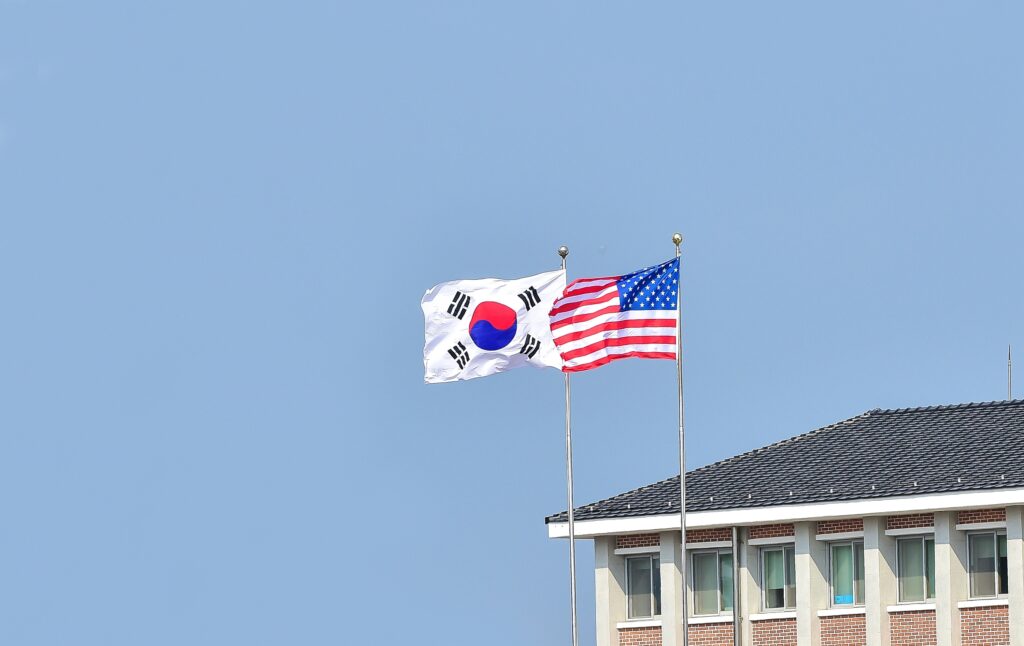The Peninsula
[2024 in Review] Wither the Nuclear-based Alliance?

Entering 2024, US and ROK defense officials wasted little time building upon the previous year’s effort to institutionalize the US-ROK Nuclear Consultative Group (NCG). Yet, by year’s end, in the wake of Donald Trump’s election victory and President Yoon Suk Yeol’s abortive martial law declaration and impeachment, the NCG faced an uncertain future.
Following the April 2023 Washington Declaration establishing the NCG, the allies held the inaugural NCG meeting in July 2023 in Seoul and the second meeting in December in Washington. During the latter, both sides acknowledged the enhanced visibility of strategic asset deployments throughout 2023 and progress in the NCG working group (WG) on NCG workstreams, highlighted the first Extended Nuclear Deterrence Immersion Course involving ROK officials, and approved the work plan and key events for the first half of 2024 to secure “substantive progress in an expedited manner.”
Soon thereafter, in February 2024, NCG co-chairs Dr. Vipin Narang, US Principal Deputy Assistant Secretary of Defense for Space Policy, and Dr. Cho Chang Lae, ROK Deputy Minister of Defense for Policy, signed the NCG Framework document, which described the objectives of the NCG and shifted its guidance from the allies’ respective National Security Councils to the US Department of Defense and ROK Ministry of National Defense. The shift was meant to further institutionalize the NCG by embedding it with working-level defense officials and moving it away from the top political leadership. Whereas NCG meetings had been convened by NSC officials in 2023—with defense officials leading the discussions—US and ROK defense officials would convene and co-chair the effort moving forward.
At the NCG’s third meeting in June, officials announced the complete review of the NCG Guidelines, which provide “principles and procedures for the Alliance to maintain and strengthen the credible and effective nuclear deterrence policy and posture.” Additionally, they discussed “joint and combined planning and execution of US-ROK CNI options on the Korean Peninsula” and reaffirmed future cooperation through interagency simulations—an NCG-led TTX and a military-to-military TTX—focused on North Korean nuclear-use scenarios. On July 11, the NCG co-chairs signed the “United States and Republic of Korea Guidelines for Nuclear Deterrence and Nuclear Operations on the Korean Peninsula,” which Presidents Biden and Yoon commended and endorsed in a joint statement the following day.
Subsequently, ROK Principal Deputy National Security Advisor Kim Tae-hyo spoke of the establishment of “an integrated extended deterrence system jointly operated by South Korea and the U.S.,” elevating the relationship to a “fully-fledged nuclear based alliance,” with Yoon reinforcing the message. According to Kim, whereas Washington had historically solely planned and provided extended deterrence, the allies would jointly declare, plan, and integrate ROK conventional with US conventional and nuclear capabilities and operations moving forward. Furthermore, Kim said, the United States had committed to assign specific missions for its nuclear assets to deter and respond to North Korean nuclear threats both in peacetime and wartime.
Although further details were not made public and Yoon and Kim’s remarks were likely a high-level public relations effort to enhance positive perceptions of the NCG among the ROK public, President Biden’s earlier approval of a revised “Nuclear Employment Guidance”—the highly classified nuclear strategic plan for the United States—indicates there may be some truth behind their statements. Among other important changes, the employment guidance increasingly stresses conventional and nuclear integration both within the US joint force and with US allies.
Efforts continued in the fall with the October 1 launch of South Korea’s Strategic Command (ROK STRATCOM) and plans for an inaugural NCG-led TTX. However, Yoon’s abortive martial law declaration disrupted the NCG’s progress. Despite ROK officials having already arrived in Washington to hold the fourth and final NCG meeting under the Biden administration, the meeting and TTX were postponed due to the short-lived martial law decree. Although US and ROK officials have stated they will get their diplomatic and security agendas back on track—including the NCG—there is less than a month left in Biden’s term and the ROK faces a void at the highest levels of its political, military and defense leadership. Under such conditions and time constraints, working-level officials can only do so much.
What matters now is how the NCG will be handled by the incoming Trump administration and, for at least several months, an interim leadership in Seoul. Assuming Yoon is eventually removed from office, a South Korean presidential election is held, and a progressive ROK administration returns to office—with markedly different national security and foreign policy priorities—it is unlikely the NCG’s expedited progress reviewed above will continue apace. Yet only time will tell exactly how it will evolve in the future.
Clint Work is Fellow and Director of Academic Affairs at the Korea Economic Institute of America. The views expressed here are the author’s alone.
Photo from Shutterstock.
KEI is registered under the FARA as an agent of the Korea Institute for International Economic Policy, a public corporation established by the government of the Republic of Korea. Additional information is available at the Department of Justice, Washington, D.C.
